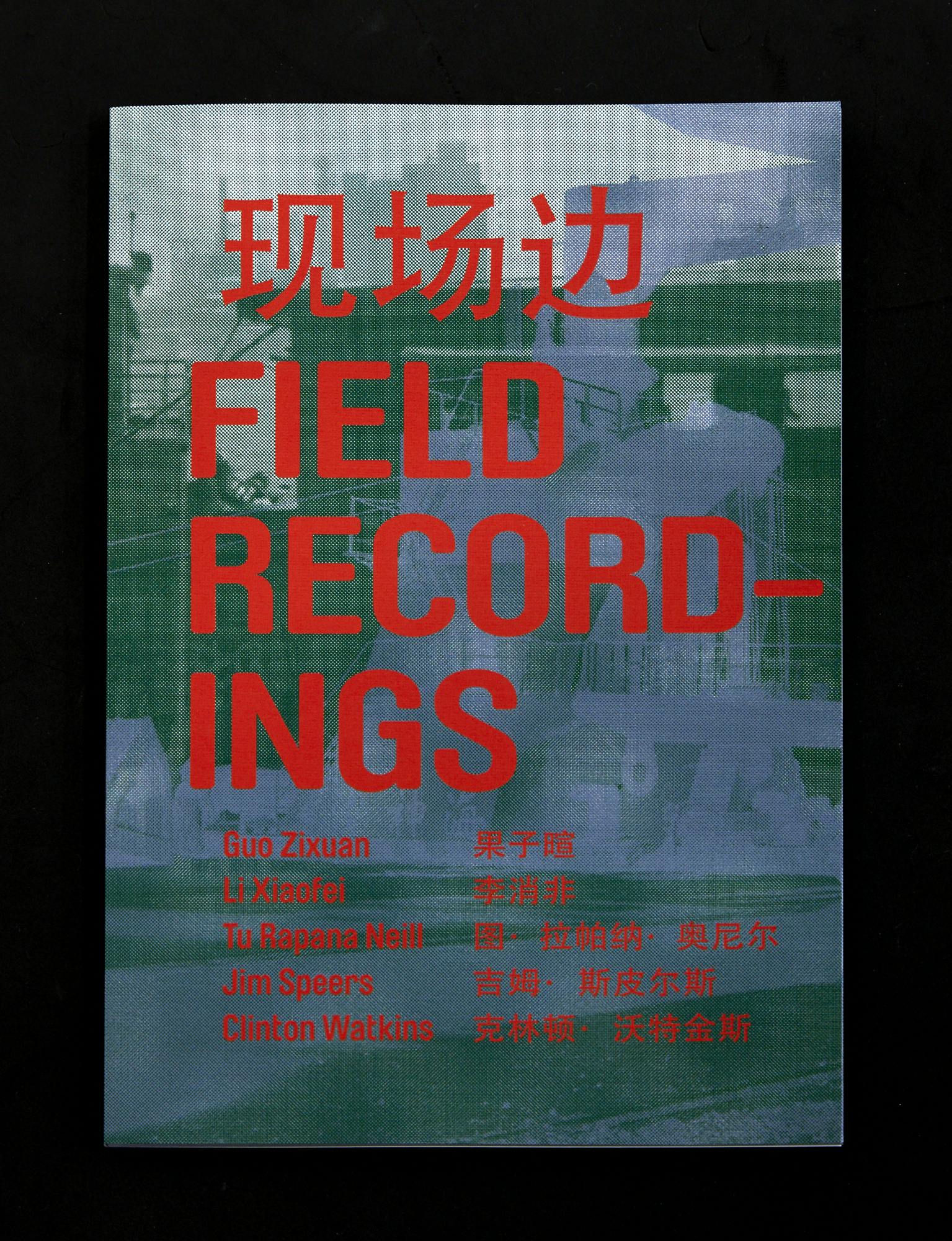“The ocean is one of capitalism’s mysterious elements,” narrates Mr Kang in one of the five video-channels in
Let the Water Flow (2016). Each channel follows a different narrative relating to the workers living on boats and along the banks of the Suzhou and Chang Jiang Rivers in Shanghai, and travelling to Hengsha Island. This multi-narrative form is central to Field Recordings’ video work as a collec-tive. Rather than attempting to present an omniscient view of Shanghai, this documentary practice constantly reveals its own limits, and the impossibility of narrative coherence across the numerous perspectives and sites that consti-tute a city. Everything we see in these works is in a state of constant movement; the city will no more stay still than the waterways that move through it.
Field Recordings is five artists: Guo Zixuan, Li Xiaofei, Tu Rapana Neill, Jim Speers and Clinton Watkins. The exhibition alongside of which this publication sits includes two works produced collectively (the single channel work
Xiao Pundong, and the multi channel video installation
Let the Water Flow), as well as individual works by the artists. Across both modes, the artists produce work with a shared interest in the social geography of contemporary Shanghai, in the social spaces that, in these films, are often precariously nested within large-scale industrial systems of production.
The consistent undercurrent is water—a physical, political and economic barrier that exists between those making a living on the rivers, and the skyscrapers that represent the proliferation of wealth in the city. Here in Ta¯maki Makaurau, a port city like Shanghai, the sight of shipping containers and urban development is familiar. Many of the containers we see on our ports come from China, which is our third-largest partner for imports and second-largest for exports.1 The disparity in scale is pronounced (Aotearoa is 0.4% of China’s export mar-ket), but the flow of capital, like the ocean on which the containers travel, is nonetheless a connecting one.
Literary theorist Gayatri Chakravorty Spivak has written, “Globalisation takes place only in capital and data. Everything else is damage control.”2 The shipping containers which transfer capital and data between the two cities, as if unin-cumbered: along with them moves ‘everything else’. What does it mean, then, to encounter this work here in Ta¯maki Makaurau, in the recognition that ‘here’ is rel-ative to each viewer? It may be possible to understand Ta¯maki Makaurau’s rela-tionship with Shanghai in economic terms, on the basis of capital transaction and data, but we ourselves, each of us and our lives, are not ‘global.’ We are differently located, always situated in and working from a specific place and perspective.
In the exhibition space, sound is arranged to offer an immersive experience, while some works have headphones to allow closer attention. The collec-tive refers to the atmospheric score as ‘public sound’, within which what is heard is unanticipated, like coming across things unexpectedly when moving through a city. This publication takes a related approach. Essays by Emma Ng, Fengrong Hsieh and Michael Wilson each address different ways in which we are intimately situated, as well as being subject to larger forces, or ‘flow’. Like the soundscape in the exhibition, the texts offer moments of discord, of wayward or non-systematic movement, and—in order to really listen, or to read—for standing still.
This publication sits alongside the exhibition
Field Recordings.
–Please visit Te Wai Ngutu Kākā Gallery to purchase this publication by cash, or contact the gallery at sgallery@aut.ac.nz to arrange bank transfer.
SEE MORE
